Should You Be Sharpening Your Hooks More?
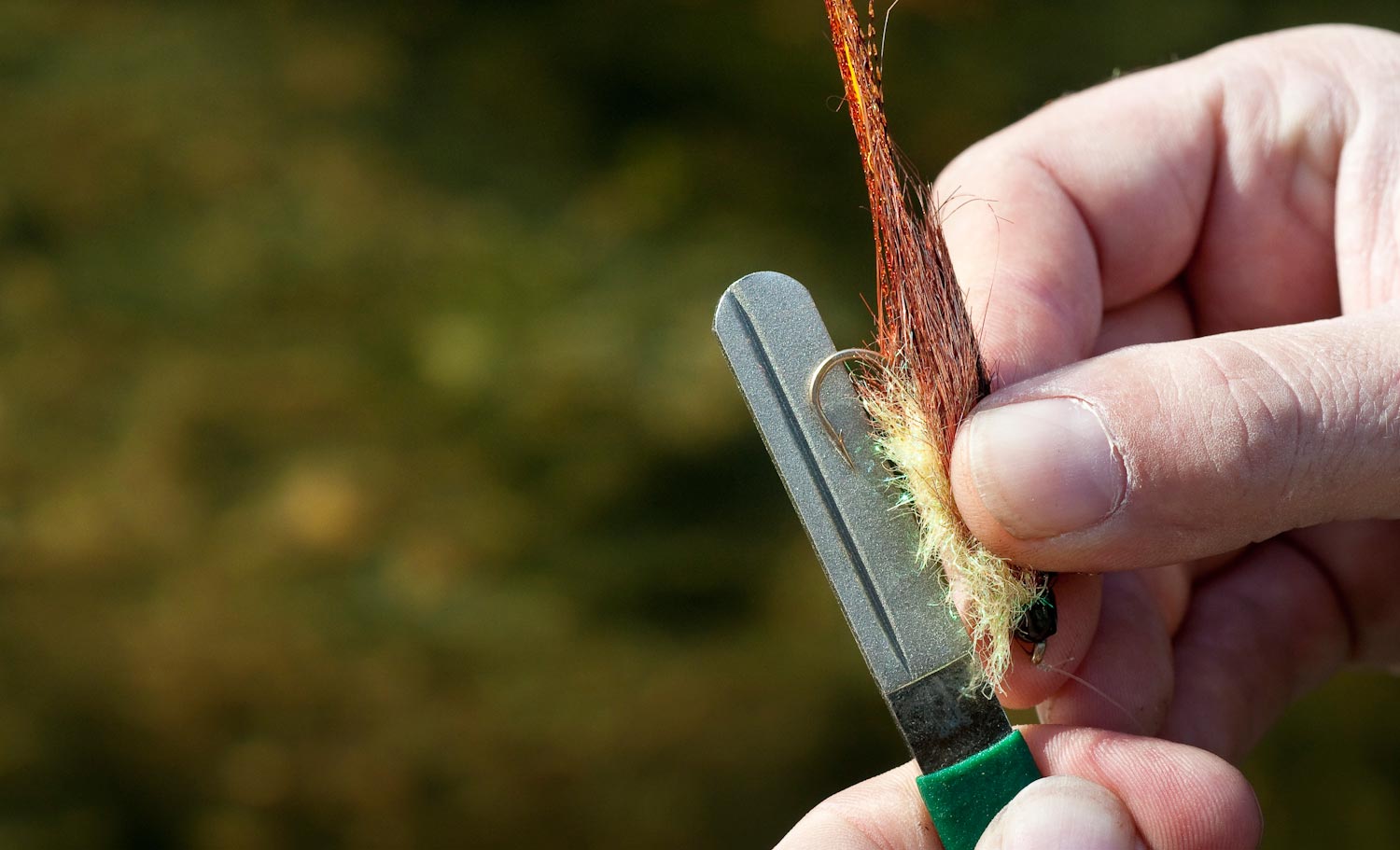
Casting all day long, searching for that beast of a brown. I’m giving it everything I’ve got. I know that’s what it’s going to take if I want a decent shot at landing a big mature brown trout. I’m looking for a 20 plus-incher and they never come easy. And where I live, you’re lucky to get a few opportunities at legitimate wild brown trout of this caliber all year long. We’re approaching a bend that’s known for holding butter slabs and I present a perfect cast right against the deep undercut bank. The retrieve begins, strip strip, pause…, strip strip, pause. Without any warning my six-inch articulated sculpin gets slammed and my fly rod just about comes out of my hands. It’s just been devoured by something very big, and I think it’s what I’ve been looking for. I set the hook hard and my rod bends as the fish breaks the surface thrashing violently, shades of butter are spotted. “It’s a brown!” I yell, but two strips and two head shakes later my fly pulls loose and the beast swims away. My prized catch is lost.
Read More »4 Questions You Should Ask Yourself Before Chasing Musky on the Fly
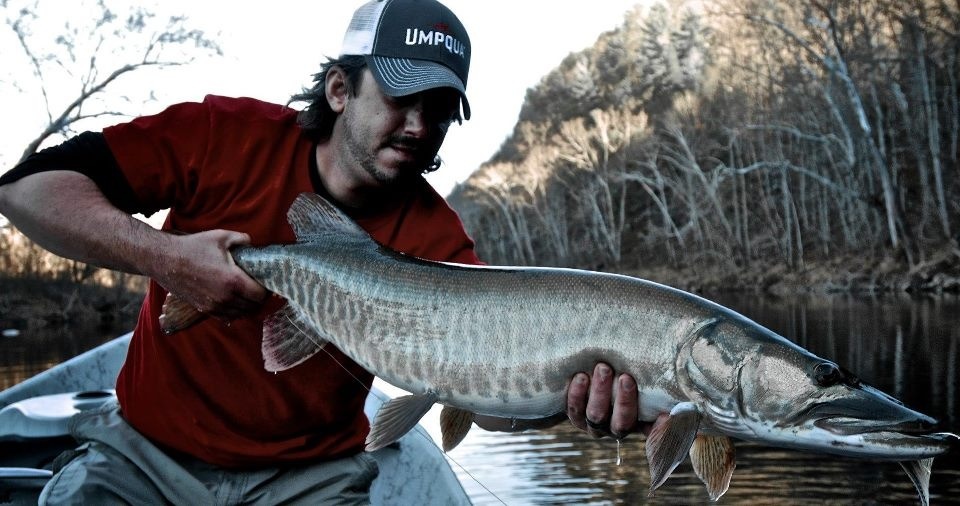
Today’s guest post was provided by Charlie Murphy, a long time member of Gink & Gasoline and musky devotee.
For those of you who don’t know Charlie, he’s as laid back as they come, he eats, sleeps and breaths fishing 365 days a year, and he’s always got your back when you need him. Another thing we love about Charlie is he’s constantly finding ways to add humor into every situation. All these qualities make Charlie a great travel and fishing partner and if you ever have the chance to fish with him, we highly recommend it. That’s enough introduction, read below Charlie’s humorous but true correlation between the old school movie The Karate Kid, the character Mr. Miyagi, and fly fishing for musky.
Read More »Surviving The Worst In Cold Weather
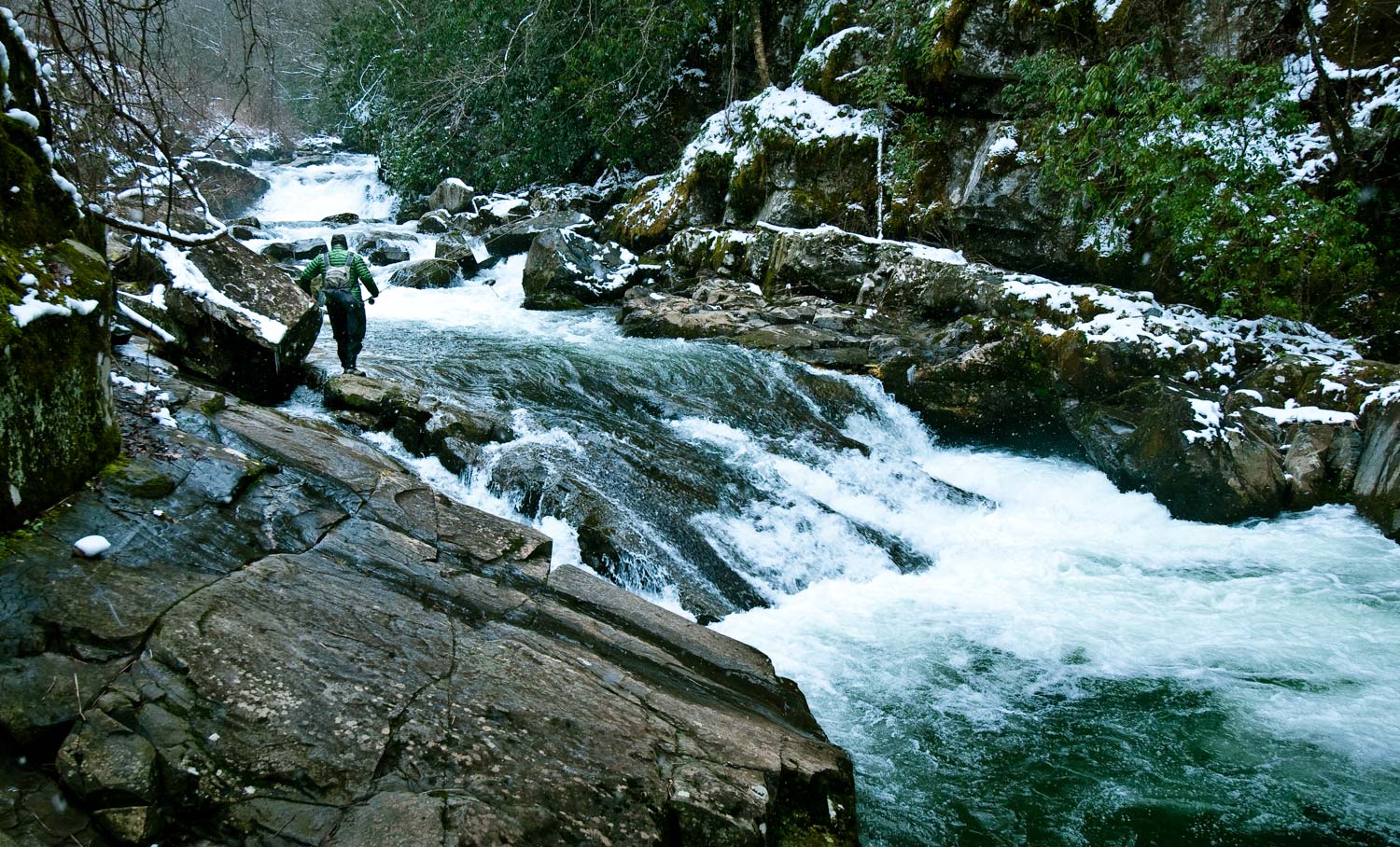
With brutal cold weather pounding much of the trout water in the US, it’s worth taking a minute to think about safety.
Living in the south, life threatening cold weather conditions are not often a concern, but even here in Georgia, you can find yourself in trouble very quickly. In fact, the most dangerous situations are the ones you didn’t expect to go badly, and didn’t prepare. Something as simple as a stone rolling under foot can turn a pleasant winter outing into a survival situation. Some years ago I found myself in exactly that situation.
Fishing a fairly remote spot along the Appalachian Trail one winter, I took a fall and injured my knee. It was bad enough that I couldn’t walk on it. I was miles from the truck and there was no trail. I had about an hour of light. The temperature was about thirty degrees Fahrenheit and falling. I had three options. I could make my way out along the river. It was the longest route and there were some tough crossings. I could hike over a couple of ridges. A shorter route but I was not sure I could find my way, even in the light. Lastly, I could spend the night out in the cold without the first piece of survival gear.
I made a crutch from a forked tree limb and decided to make my way along the river. I fell a couple of more times but I did finally make it to the truck about ten that night. It was the first time I found myself in that kind of spot and it changed the way I thought about planing a fishing trip. I made some good decisions that day, and maybe some bad ones, but I took the time to learn a bit about surviving in cold weather and I recommend that everyone who fishes do the same.
I am a southerner, which makes me apprehensive about giving advice on cold weather. As our best trout fishing is in the winter, I do spend a lot of cold days on the river and I’m not a survival expert but I do take some common sense precautions. With that in mind, here are some tips on staying safe while fishing in cold weather.
Tips for fishing safety in cold weather.
Be prepared
By far the best way to survive a dangerous situation is not to find yourself in one to start with. That means starting with a good plan. You should know what to expect from the weather and be prepared for the worst. Know the area you’re fishing. Know all of your options for getting in and out, both on foot and by vehicle. If for example, you access your spot by driving in on a forest road, it might be smart to
Read More »Reece’s Stepchild Stone
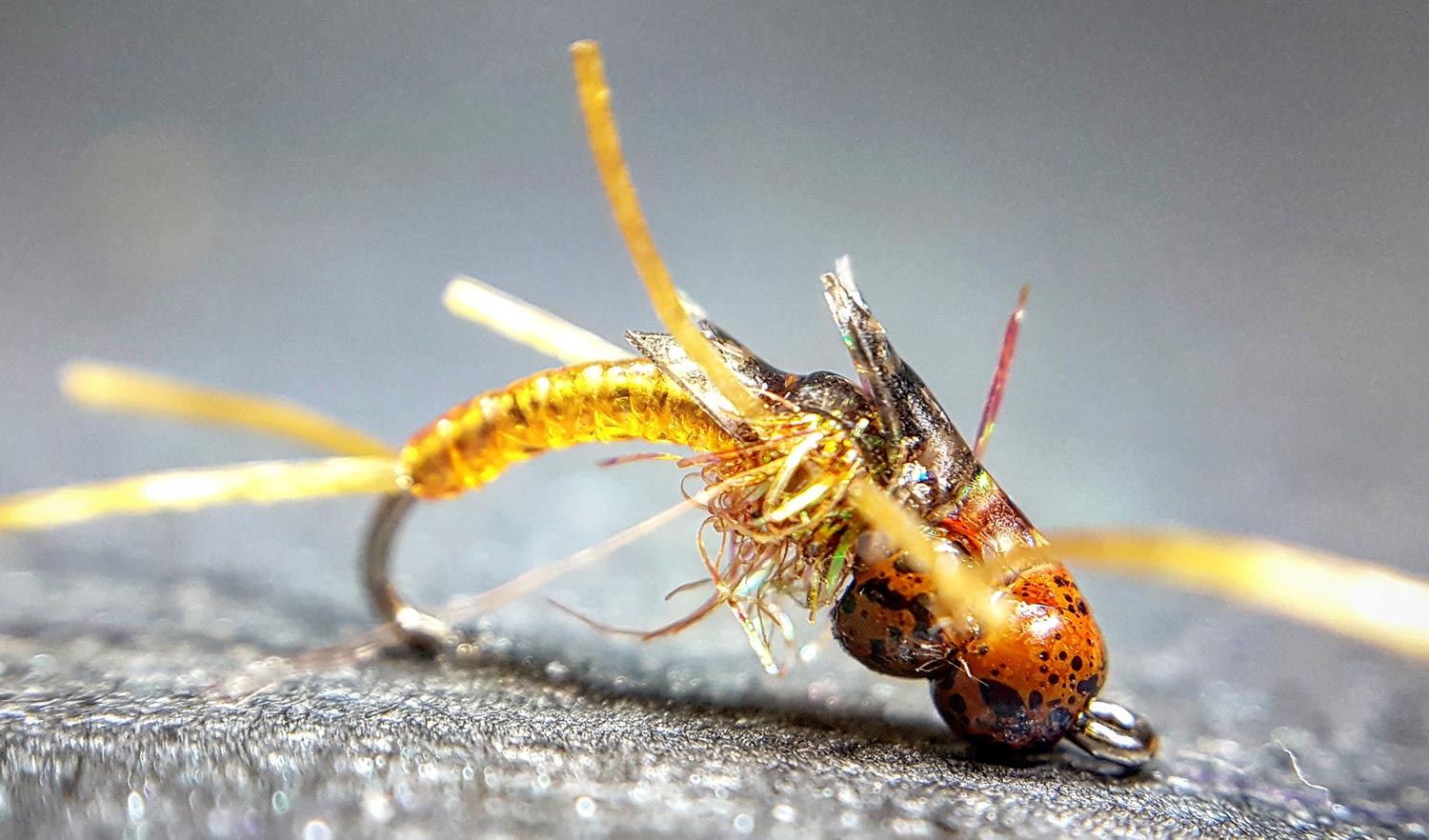
By Bob Reece
The title of stonefly conjures up images of gargantuan aquatic insect life.
This is true for several species in the late reaches of their life. However, their more petite partners and developmental stages should not be overlooked when filling your fly box.
Stonefly nymphs in the smaller sizes of 12-16 are available throughout the year in freestone streams and rivers. This fact led me to create this pattern. The Stepchild is a smaller variation of my Rolling Stone. Its combination of reduced size and mottled beads make it an ideal candidate for clear water conditions. The slim abdomen and double dose of tungsten plummet this bug to the desired depth.
When fishing this pattern, I use it as the anchor point in my nymphing setup. This holds true whether I’m using an indicator rig or tight line set up. The Stepchild Stone also works wonderfully as a dropper in sizes 14 and 16. I always connect it using
Read More »Choosing The Right Color Lens For Your Fishing

Polarized sunglasses are one of the most critical pieces of gear an angler can equip themselves with on the water.
They significantly cut down the glare on the water so you can spot fish and read water more effectively. Without them an angler can feel naked and ill-equipped. Polarized sunglasses play so many important roles in everyday fly fishing, and making a point to choose the right lens color before you hit the river can end up adding or subtracting to your overall success on the water. I carry two different pair of sunglasses with me at all times. Depending on the fishing location, time of day, and available light, I’ll choose one over the other.
Yellow Lens (Low Light Conditions)
Early morning and late evening hours when the sun is low in the horizon and off the water I prefer to wear polarized sunglasses with yellow lens. They increase the contrast and brighten everything a couple notches. I also prefer yellow lens when I’m fishing heavily canopied streams. Sometimes even in the middle of the day, there are many places where the sun doesn’t penetrate the canopy, and you’ll find yellow lens are the only way to go for these shady low light conditions. Nasty weather days when its cloudy and rainy, yellow lens perform well. The winter brings with it limited sunshine on the water, since the sun doesn’t move across the horizon as high, and wearing yellow lens solves this problem. You don’t want to go 100% with a yellow lens for every day fishing though. During high light levels you won’t get the contrast you’ll need, but they do perform extraordinarily well in niche low light situations.
Amber Lens (Moderate to High Light Conditions)
If you only had the luxury to choose one color lens for fishing, there’s no better color choice than amber.
Rigging Tube Flies: Video
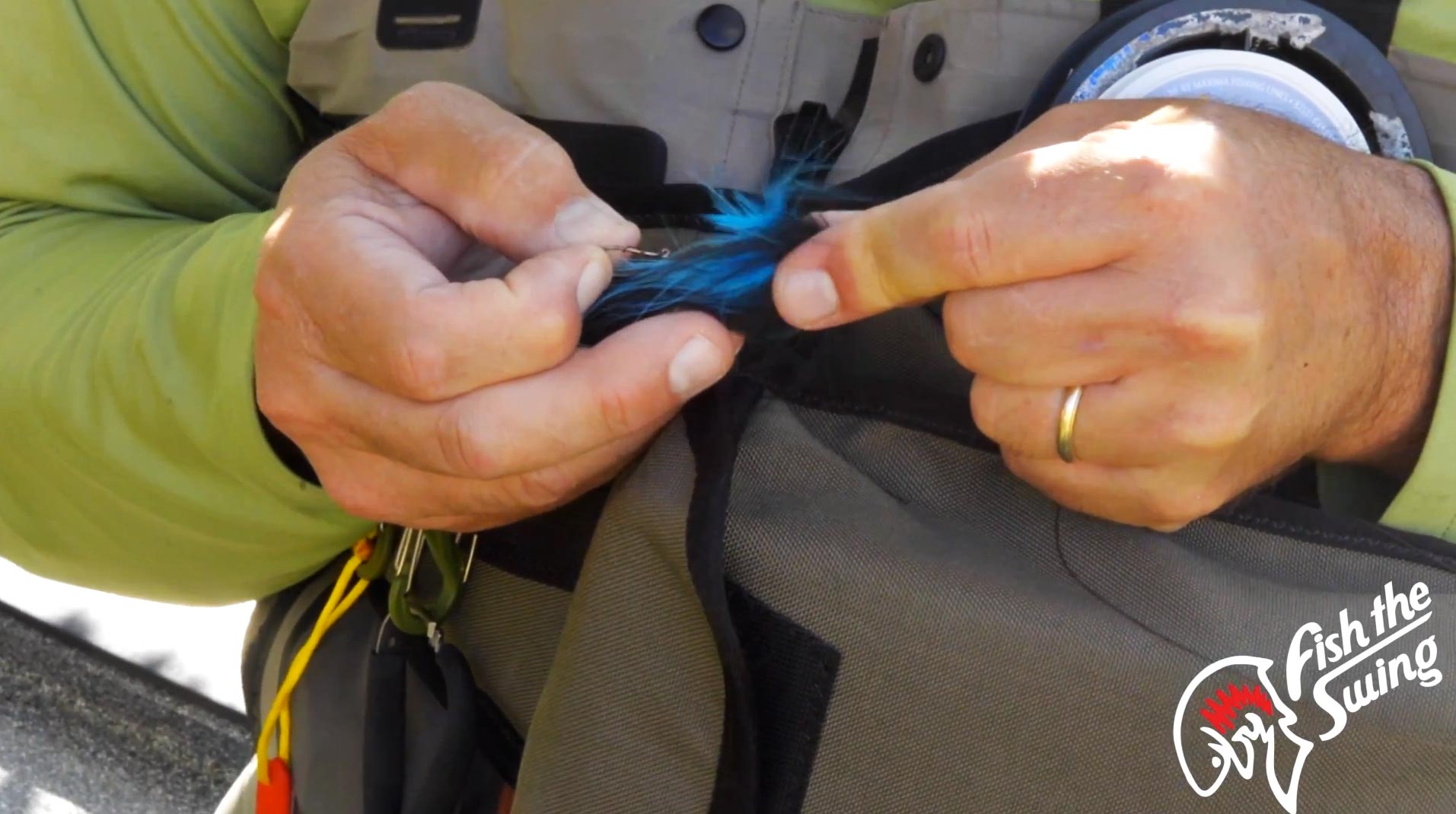
By Louis Cahill I love tube flies and I fish them almost exclusively when I’m after steelhead. Tube flies are a powerful tool. They are the most versatile flies you can tie and the most economical. The secret is that there’s no hook. The fly is tied on a hollow plastic tube, which slides over the leader. The hook is added to the end of the leader. It’s a brilliant system and it’s extremely effective, especially for steelhead. Here are a couple of reasons you should be fishing tube flies. They work The key to the effectiveness of a tube fly is the hook placement. It’s very easy to control the placement of the hook so that, if a fish nips at your fly, the hook is the first thing he gets. They’re affordable The most expensive part of a fly is the hook. You can tie a limitless number of tube flies without using a single hook. On my last steelhead trip I changes flies over a dozen times, but I only used 2 hooks. They’re versatile The coolest thing about tube flies is that they are modular. You can stack tubes on your leader to get the exact size and color combination you’re looking for. You can add cone heads or eyes, tied to small tubes, on the spot. Tube flies let you create the fly for the conditions at the minute. You do need some special equipment to tie tube flies but it’s not expensive. You can get a set of mandrills for as little as $16.99 (HERE) or a dedicated tube fly vice for $130 (HERE), if you like. Either will pay for itself pretty quickly with what you save on hooks. You can tie any fly on a tube, but they have become the gold … Continue reading
Read More »Downstream Presentation Video
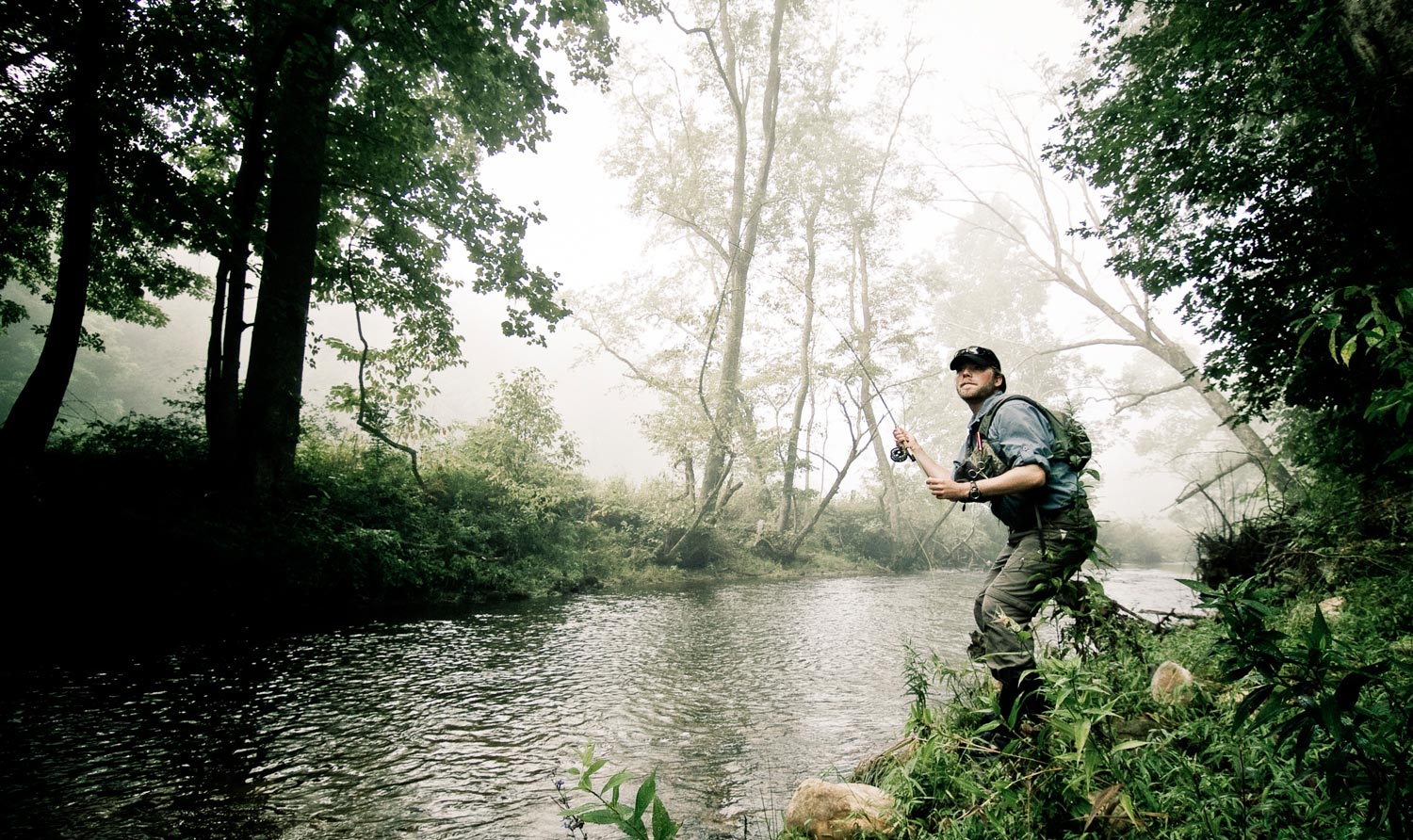
Sometimes your best presentation to a fish is directly downstream.
Often, it’s just a matter of position. Maybe the water is too heavy to wade across or there’s no room for a clean cast from the far bank. Other times a downstream presentation is the only way to fool a well-educated trout. Making a downstream presentation shows the fish the fly first, before he has a chance to see the line or leader. For whatever reason, it’s important to know how to make a downstream presentation and still get a perfect drag-free drift.
Too many anglers have been taught to shake line out of their rod tip as the fly drifts down stream. This method is never ideal. It puts too much energy into the line and pays out slack too slowly. It’s an uncontrollable method, which usually ends in a poor drift.
A better way to pay out line is to use a mend. Start with all the line you need off of the reel. As the fly drifts, use a mending motion to pay out about two feet of line at a time. This not only gives you a more controlled presentation, it helps you be ready to set the hook.
WATCH THIS VIDEO AND LEARN TO MAKE A PERFECT DOWNSTREAM PRESENTATION.
Read More »Reece’s Fusion Nymph
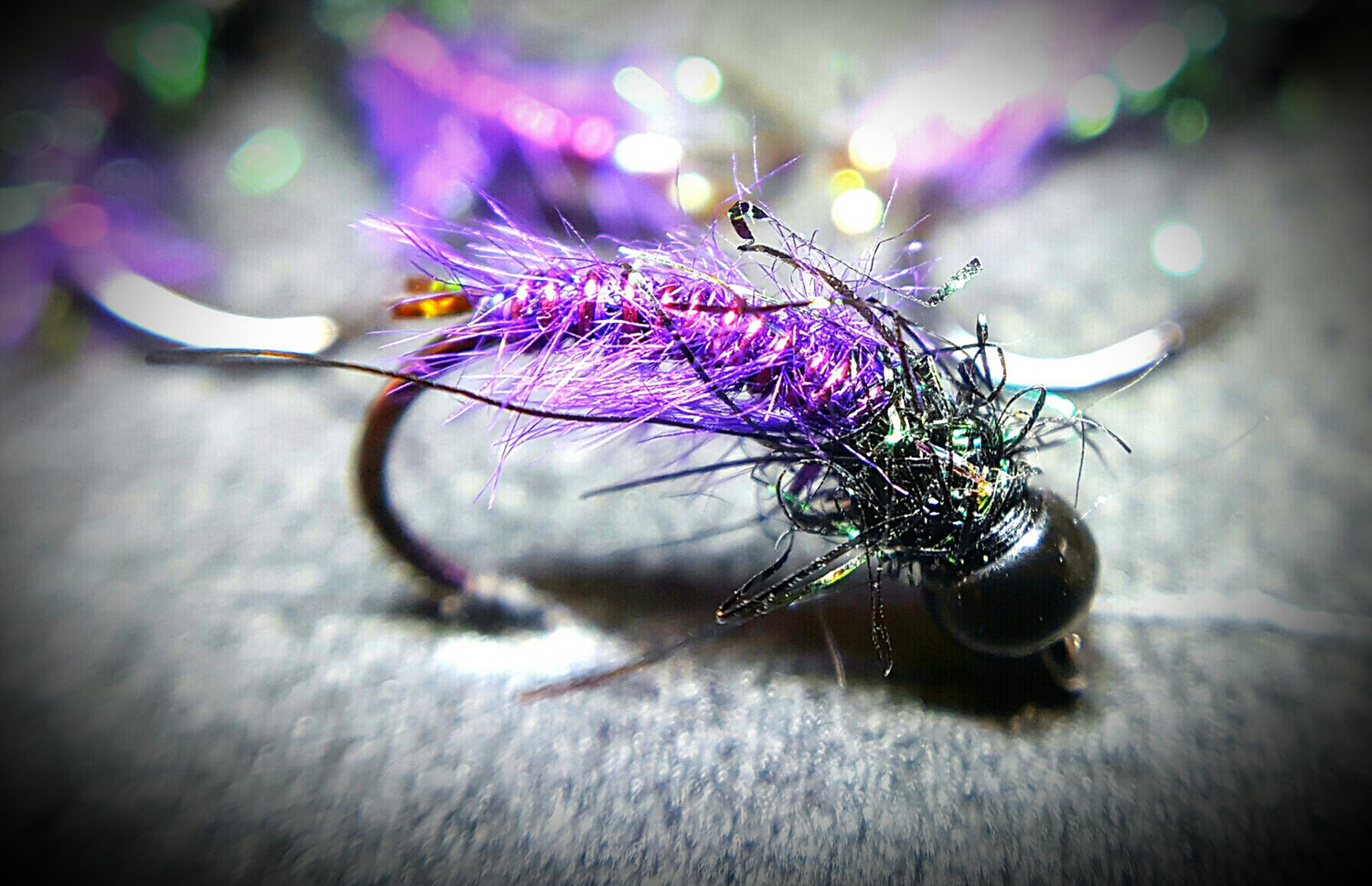
Bob Reece
Wire body nymphs sink quickly but their rigid structure produces no added movement.
Dubbed nymph bodies provide excellent movement but do not sink quickly and lack durability. Reece’s Fusion nymph combines these elements, allowing it to sink quickly, display enhanced movement and sport excellent durability.
Versatility of application and ease of creation are appealing payoffs for the investment of time at the vise. The process and materials used to create this pattern, check both of the above mentioned boxes. With the variety of available colors of Ultra Wire, Ostrich Herl and Ice Dub, the color combinations for this fly are nearly endless. The size range is also highly flexible. By adjusting the wire diameter and portion of the herl used, this nymph can be tied from a size twenty up to a size six. A size twenty, for example, would be tied using extra small Ultra Wire and the fine tip portion of the herl. Conversely, a size six would incorporate large Ultra Wire and the widest portion of the herl, found from mid stem down to the base. The optional inclusion of various sizes of MFC Sexi-Floss for rubber legs, can be used to increase the already present element of movement. Over the past three years this pattern in its plethora of sizes and color combinations has brought fish to net on numerous still waters, freestones and even the highly pressured tailwaters of Cheesman canyon, Gray’s Reef and the Miracle mile. Its applications are not limited to trout. It has proved itself as an effective pattern for other species ranging from grayling to pan fish.
With regard to process, the simplicity of this patterns makes for an easy creation for tiers at all skill levels. Its fundamental steps of construction are frequently used in the creation of other patterns and should become part of the repertoire of any aspiring tiers. Due to the small number of steps, the overall time for creation is minimal. This serves as another benefit in a world of constant busyness and demands for our free time.
There are several rigging options for this pattern depending on the type of water that is being fished. When using the Fusion on still waters, I rig it as the bottom fly on a suspended nymph rig under an indicator. This same set up is also applicable on moving water. Additionally the Fusion nymph makes for a great dropper in the widely used dry dropper rigging. It’s important to note that the high density of its construction requires a large foam terrestrial to float it in its larger sizes. If used as a dropper below a traditional dry fly, the Fusion nymph size should fall into the sixteen to twenty range. Moving beyond more traditional setups, this patterns serves as a solid foundation at the bottom of a tight line rig. In an even more atypical setup, I’ve had great success trailing this bug two feet behind a small streamer pattern in clear water conditions.
Watch this video and learn to tie Reece’s Fusion Nymph
Read More »Strategies for Streamer Fishing High Water on Tailwaters
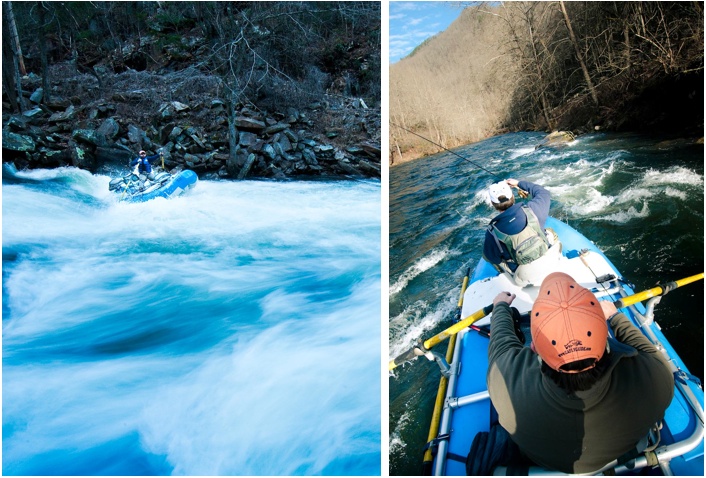
IT’S REALLY HARD TO BEAT STREAMER FISHING HIGH WATER ON TAILWATER’S FROM A DRIFT BOAT, ESPECIALLY WHEN YOUR WANTING TO TARGET TROPHY CLASS FISH.
Although numbers of trout caught during high water flows usually are lower than fishing during low water flows, the size of your catches generally are much larger. In my opinion, the biggest fish in the river prefer to feed during high water because it’s easy for them to ambush their prey, and they feel camouflaged and protected by the high water flows.
For those of you that fish tailwater’s you probably understand water flows change significantly during generation and non-generation periods. Some tailwaters during minimum flow periods have water releases under 100 cubic feet of water per second (CFS), and when generation is taking place, water flows can be 10-20 times higher. Because of this, it’s very important for anglers fishing high water to outfit themselves correctly, otherwise they may find themselves coming off the water fish-less. Below are some tips and strageties I use on tailwaters when I’m fishing high water conditions.
Tip 1. Leave your 4-5 weight fly rods at home and pack your 7-9 weight fly rods.
Your best bet for going after the big boys during high water flows is fishing streamers. There are some tailwater’s out there where you can still dry fly and nymph fish effectively, but most of the time, if you want to target the largest trout in the river, you’ll want your flies to imitate the larger food sources. Some examples of these food sources are:
Don’t get yourself caught in a tight spot!
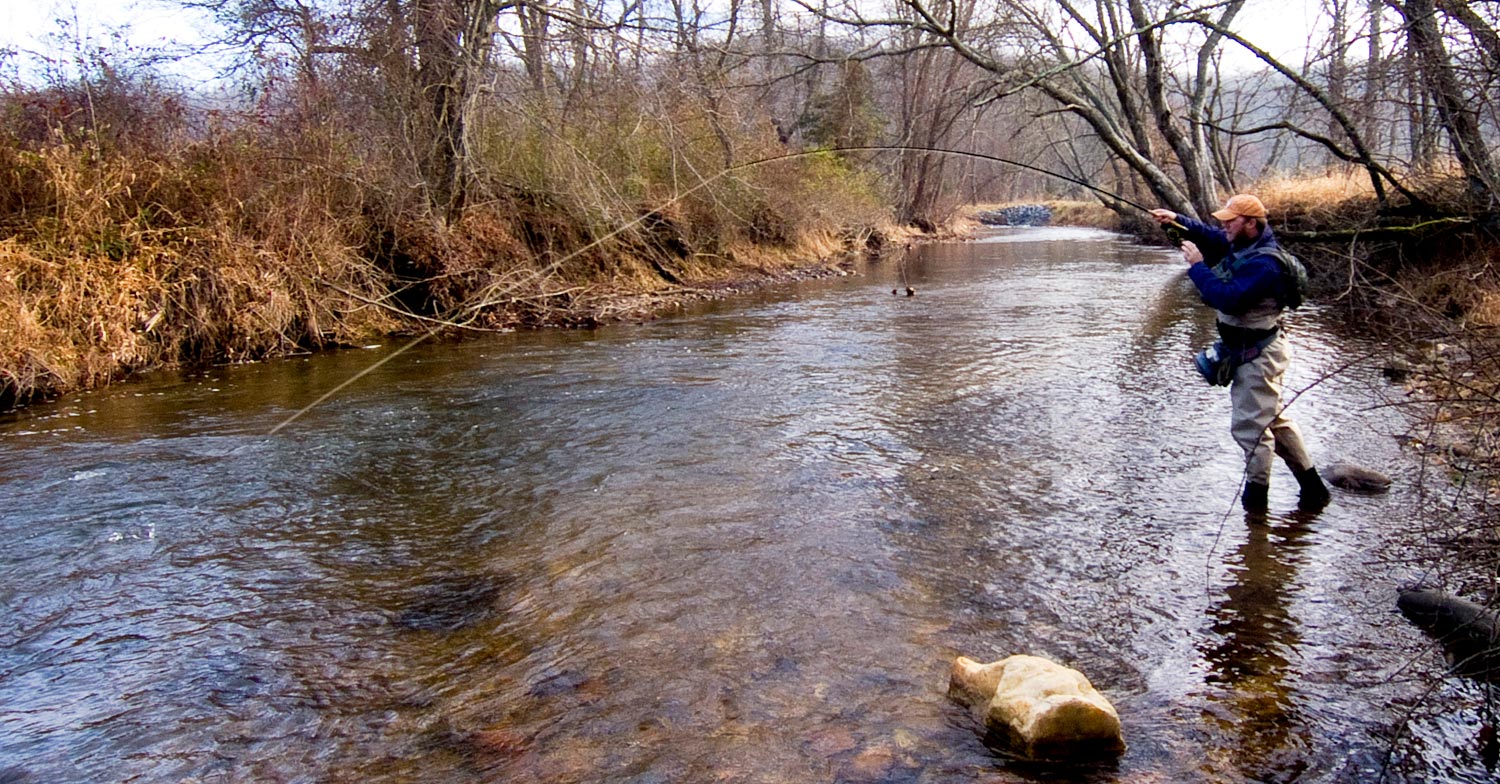
By Justin Pickett
“MY MOUTH SPEWED WITH EXPLETIVES. MY BUDDY’S FACE WAS BLANK. I KNEW THAT IT WAS THE RESULT OF SEVERAL POOR DECISIONS.”
Recently, I headed up north with a great friend of mine to fish a small stream in north Georgia. Over the past couple of years this destination had become one of our favorite pieces of water. The main reasons being the number of large brown trout found there, and how it seemed one of us would hook up with one these large residents every time we wet a line in its waters.
That Spring day was perfect. Cool temps. Cloudy skies. The water was just a bit stained from the rain the night prior.
We headed straight for the section of stream where, historically, we’ve had the best luck hooking up with some nice brown trout. Fishing our way up through this section, we were coming up empty handed. Only a couple of eager rainbows had bent our rods during the first couple of hours.
We typically fish together with alternating casts and different rigs. This has always proven successful, but today I decided to depart from our usual method and jump ahead of my fishing buddy. Straying further upstream, I figured we’d just holler at each other should we need help with something.
I approached a run that just looked fishy as hell. A shallow section of water dumped into a deep bucket and then cut under the far bank, which was lined with rhododendrons. At the tail of the run a tree branched out over the water providing shade and cover. It had trophy trout sanctuary written all over it.
My euro-rig that day consisted of a #6 black stonefly nymph, trailed by a #6 Vladi worm, and I had them tied to 3x and 4x fluoro tippet respectively. To say, I have confidence in this tandem on days where the water is stained, is an understatement.
On the second drift through the meat of this run, my rod translated a solid thump in the line. I lifted the rod tip and set the hook hard, and immediately I can feel
Read More »